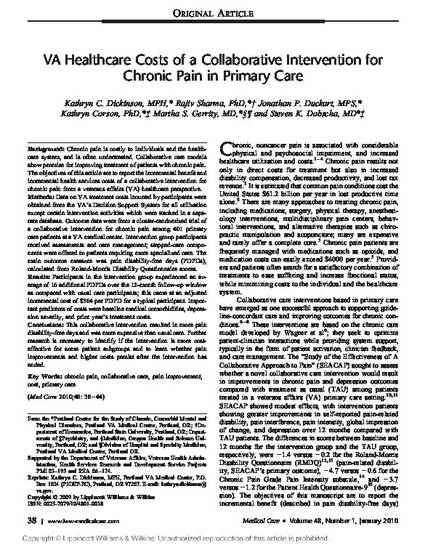
- Chronically ill -- Care,
- Disease management,
- United States. Department of Veterans Affairs
Background: Chronic pain is costly to individuals and the healthcare system, and is often undertreated. Collaborative care models show promise for improving treatment of patients with chronic pain. The objectives of this article are to report the incremental benefit and incremental health services costs of a collaborative intervention for chronic pain from a veterans affairs (VA) healthcare perspective.
Methods: Data on VA treatment costs incurred by participants were obtained from the VA's Decision Support System for all utilization except certain intervention activities which were tracked in a separate database. Outcome data were from a cluster-randomized trial of a collaborative intervention for chronic pain among 401 primary care patients at a VA medical center. Intervention group participants received assessments and care management; stepped-care components were offered to patients requiring more specialized care. The main outcome measure was pain disability-free days (PDFDs), calculated from Roland-Morris Disability Questionnaire scores.
Results: Participants in the intervention group experienced an average of 16 additional PDFDs over the 12-month follow-up window as compared with usual care participants; this came at an adjusted incremental cost of $364 per PDFD for a typical participant. Important predictors of costs were baseline medical comorbidities, depression severity, and prior year's treatment costs.
Conclusion: This collaborative intervention resulted in more pain disability-free days and was more expensive than usual care. Further research is necessary to identify if the intervention is more cost-effective for some patient subgroups and to learn whether pain improvements and higher costs persist after the intervention has ended.

To the best of our knowledge, one or more authors of this paper were federal employees when contributing to this work. This is the publisher’s final pdf. The published article is copyrighted by Lippincott Williams & Wilkins, Inc. and can be found at: http://dx.doi.org/10.1097/MLR.0b013e3181bd49e2